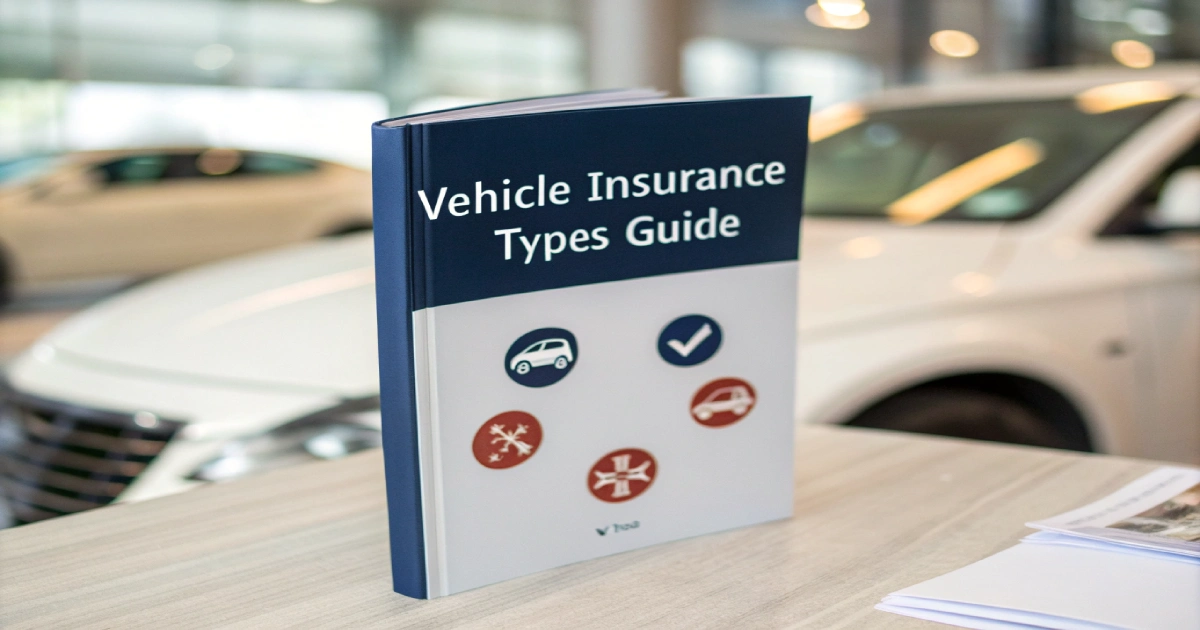
Five Essential Types of Vehicle Insurance Coverage: A Comprehensive Guide
Understanding the different types of vehicle insurance coverage is crucial for making informed decisions about protecting your vehicle and financial well-being. This guide breaks down the five fundamental types of auto insurance coverage, explaining their purposes, benefits, and importance in your overall insurance strategy.
1. Liability Insurance Coverage
Purpose and Protection
Liability insurance serves as the foundational coverage required by most states, protecting you against financial responsibility when you're at fault in an accident.
Key Components:
- Bodily Injury Liability: Covers medical expenses for others
- Property Damage Liability: Addresses damage to other vehicles or property
- Legal Defense Coverage: Protects against lawsuit-related expenses
State Requirements:
- Minimum coverage limits vary by state
- Typically expressed as three numbers (e.g., 25/50/25)
- Regular review needed to ensure adequate protection
2. Collision Coverage
Primary Function
Collision insurance specifically addresses damage to your vehicle resulting from accidents with other vehicles or objects.
Coverage Elements:
- Repair costs for your vehicle
- Replacement value if totaled
- Protection regardless of fault
- Deductible options for cost management
Key Considerations:
- Essential for newer vehicles
- Optional for older vehicles
- Loan requirements often mandate coverage
- Deductible choice affects premium costs
3. Comprehensive Coverage
Scope of Protection
Comprehensive coverage addresses non-collision related damage to your vehicle, providing broad protection against various risks.
Protected Incidents:
- Natural disasters and severe weather
- Theft and vandalism
- Fire damage
- Animal collisions
- Falling objects
Risk Assessment Factors:
- Vehicle value and age
- Geographic location risks
- Parking conditions
- Local crime rates
4. Personal Injury Protection (PIP)
Medical Coverage Focus
PIP provides essential medical expense coverage for you and your passengers, regardless of fault in an accident.
Covered Expenses:
- Medical treatment costs
- Lost wages compensation
- Rehabilitation expenses
- Essential services reimbursement
- Funeral expenses if necessary
Availability Considerations:
- Mandatory in no-fault states
- Optional in other jurisdictions
- Coverage limits vary by state
- Coordination with health insurance
5. Uninsured/Underinsured Motorist Coverage
Protection Purpose
This coverage safeguards you when involved in accidents with drivers who lack adequate insurance coverage.
Coverage Types:
- Bodily injury protection
- Property damage coverage
- Hit-and-run incident protection
- Medical expense coverage
Importance Factors:
- High percentage of uninsured drivers nationally
- Rising medical costs
- Inadequate coverage from other drivers
- Protection against financial loss
Making Informed Coverage Decisions
Coverage Selection Strategy
- Evaluate personal financial situation
- Assess vehicle value and age
- Consider geographic risk factors
- Review state requirements
- Analyze cost-benefit ratios
Risk Management Considerations
- Driving habits and patterns
- Vehicle usage type
- Storage location
- Security measures
- Maintenance practices
Cost Optimization Approaches
Premium Reduction Methods
- Bundle multiple policies
- Maintain good driving record
- Install security devices
- Complete safety courses
- Choose appropriate deductibles
Coverage Level Decisions
- Evaluate asset protection needs
- Consider loan requirements
- Review personal risk tolerance
- Assess emergency fund availability
- Monitor changing circumstances
Conclusion
Understanding these five essential types of vehicle insurance coverage enables informed decisions about protecting your vehicle and financial interests. Each coverage type serves a specific purpose in your overall insurance strategy, and careful consideration of your personal circumstances helps determine the appropriate levels of protection.
Regular review and adjustment of your coverage ensure continued alignment with your needs and circumstances. Consider consulting with insurance professionals to develop a comprehensive coverage strategy that provides adequate protection while maintaining cost efficiency.
Remember that while state minimum requirements provide a baseline, your personal situation may warrant additional coverage. Evaluate your needs carefully and select coverage levels that provide peace of mind while protecting your financial well-being.
